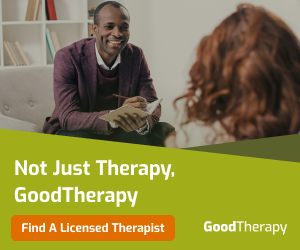 Post-Traumatic Stress Disorder (PTSD) is a well-known mental health condition that arises from experiencing or witnessing a traumatic event. However, a lesser-known but equally significant condition, Complex PTSD (C-PTSD), occurs when an individual endures prolonged or repeated trauma, particularly in interpersonal contexts. Understanding the distinction between PTSD and C-PTSD, recognizing symptoms, and exploring treatment options is essential for individuals seeking healing and support. Often times CPTSD is mis diagnosed, as symptoms like anxiety and depression come with it.
Post-Traumatic Stress Disorder (PTSD) is a well-known mental health condition that arises from experiencing or witnessing a traumatic event. However, a lesser-known but equally significant condition, Complex PTSD (C-PTSD), occurs when an individual endures prolonged or repeated trauma, particularly in interpersonal contexts. Understanding the distinction between PTSD and C-PTSD, recognizing symptoms, and exploring treatment options is essential for individuals seeking healing and support. Often times CPTSD is mis diagnosed, as symptoms like anxiety and depression come with it.
What is Complex PTSD?
Complex PTSD is a psychological disorder that develops in response to chronic trauma over an extended period. This type of trauma often occurs in situations where escape is difficult or impossible, such as childhood abuse, domestic violence, emotional neglect, or prolonged bullying. Unlike PTSD, which can result from a single traumatic event, C-PTSD stems from sustained traumas, particularly when inflicted by caregivers or authority figures. These traumas can be less noticeable, like microaggressions, but over time they wear down a persons ability to function.
How is C-PTSD Different from PTSD?
While PTSD and C-PTSD share similarities, they differ in key ways:
- Nature of Trauma: PTSD can result from a one-time traumatic event, such as an accident, natural disaster, or assault. C-PTSD develops from prolonged trauma, particularly in interpersonal relationships.
- Emotional Dysregulation: Individuals with C-PTSD often struggle with intense and persistent emotional difficulties, including anger, shame, or sadness, which may not be as pronounced in PTSD.
- Distorted Self-Perception: C-PTSD sufferers frequently experience a deeply ingrained sense of worthlessness, guilt, or a feeling of being permanently damaged, whereas PTSD typically centers on fear-based responses.
- Relationship Challenges: Those with C-PTSD often struggle with trust, forming secure attachments, or fearing abandonment, making interpersonal relationships more difficult than for those with PTSD.
- Dissociation and Identity Issues: Individuals with C-PTSD may experience depersonalization, a fragmented sense of self, or memory issues related to their trauma.
Symptoms of C-PTSD
The symptoms of C-PTSD can be grouped into several categories:
- Emotional and Psychological Symptoms:
- Intense emotional reactions or difficulty regulating emotions
- Chronic feelings of guilt, shame, or self-blame
- Depression, anxiety, or suicidal thoughts
- Emotional numbness or dissociation
- Cognitive and Behavioral Symptoms:
- Difficulty concentrating or making decisions
- Persistent negative beliefs about oneself or the world
- Self-destructive behaviors (substance abuse, self-harm, risky behaviors)
- Interpersonal Symptoms:
- Trouble forming and maintaining relationships
- A tendency to isolate from others
- Difficulty trusting people, even those who are safe
- Fear of abandonment or intense need for reassurance
- Physical Symptoms:
- Chronic pain, headaches, or gastrointestinal issues
- Sleep disturbances, including nightmares or insomnia
- Increased sensitivity to perceived threats (hypervigilance)
Treatment Approaches for C-PTSD
Healing from C-PTSD is a complex process, but with the right therapeutic support, individuals can learn to manage symptoms, develop resilience, and improve their quality of life. Some of the most effective treatments include:
- Therapy:
- Trauma-Focused Cognitive Behavioral Therapy (TF-CBT): Helps individuals reframe negative beliefs and develop healthier coping strategies.
- Eye Movement Desensitization and Reprocessing (EMDR): Uses guided eye movements to process traumatic memories and reduce emotional distress.
- Dialectical Behavior Therapy (DBT): Focuses on emotional regulation, distress tolerance, and improving interpersonal skills.
- Internal Family Systems (IFS) Therapy: Addresses the fragmented self and helps integrate different aspects of identity.
- Medication:
- Antidepressants (such as SSRIs and SNRIs) can help manage symptoms of anxiety and depression.
- Mood stabilizers and anti-anxiety medications may be prescribed in some cases.
- Yoga, meditation, and breathwork can help regulate the nervous system.
- Somatic Experiencing (SE) helps release trauma stored in the body.
- Art or Music Therapy can provide non-verbal ways to process trauma.
- Lifestyle and Self-Care Practices:
- Establishing routines to create a sense of safety and predictability
- Engaging in creative outlets, journaling, or mindfulness practices
- Building supportive relationships and practicing self-compassion
The Path to Healing
Recovery from C-PTSD is not linear, but with the right support, individuals can regain a sense of safety, self-worth, and emotional balance. Seeking professional help, building healthy relationships, and practicing self-compassion are critical steps toward healing.
If you or someone you know is struggling with C-PTSD, reach out. It is important to find a practitioner who understands CPTSD and can facilitate an effective treatment plan. CPTSD is not a life sentence, you can take the first step toward reclaiming a life free from trauma’s grip.

The preceding article was solely written by the author named above. Any views and opinions expressed are not necessarily shared by GoodTherapy.org. Questions or concerns about the preceding article can be directed to the author or posted as a comment below.



Please fill out all required fields to submit your message.
Invalid Email Address.
Please confirm that you are human.
Leave a Comment
By commenting you acknowledge acceptance of GoodTherapy.org's Terms and Conditions of Use.